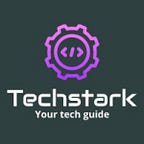Web1
Web1, also known as the read-only web, was the first generation of the Internet. It was characterized by static web pages that were created and maintained by a small number of people. Users could only read these pages, not interact with them.
Examples of Web1 websites include:
- Static personal web pages
- Online encyclopedias
- Company websites that simply listed information about the company
Web2
Web2 is the current generation of the internet. It is characterized by user-generated content and interactivity. Users can now create and share their own content, such as blog posts, social media posts, and videos. They can also interact with other users through forums, chat rooms, and social media platforms.
Examples of Web2 websites include:
- Social media platforms (Facebook, Twitter, Instagram)
- Online forums (Reddit, Quora)
- E-commerce websites (Amazon, eBay)
- Video-sharing platforms (YouTube)
Web 3
Web3 is the next generation of the internet, which is still under development. It is envisioned as a decentralized web, where users have more control over their data and how it is used. Web3 applications are typically built on blockchain technology, which allows them to operate without the need for a central intermediary.
Examples of Web3 applications include:
- Decentralized finance (DeFi) applications: DeFi applications allow users to lend, borrow, and trade assets without the need for a bank or other financial institution.
- Non-fungible token (NFT) marketplaces: NFT marketplaces allow users to buy, sell, and trade NFTs.
- Decentralized autonomous organizations (DAOs): DAOs are community-driven organizations that are governed by smart contracts.
In Web2, when you use a social media platform, you are creating data about yourself and your interests. This data is then owned and controlled by the social media platform. In Web3, you could use a decentralized social media platform where you own your own data. You could then choose to share your data with specific applications or services, or you could keep it private.
Web3 is still in its early stages of development, but it has the potential to revolutionize the way we interact with the internet. By decentralizing data and giving users more control over their online experiences, Web3 could create a more equitable and open web.
